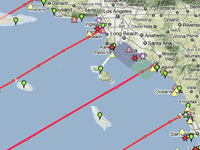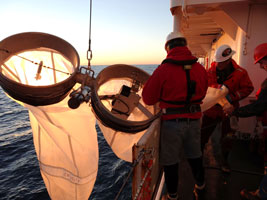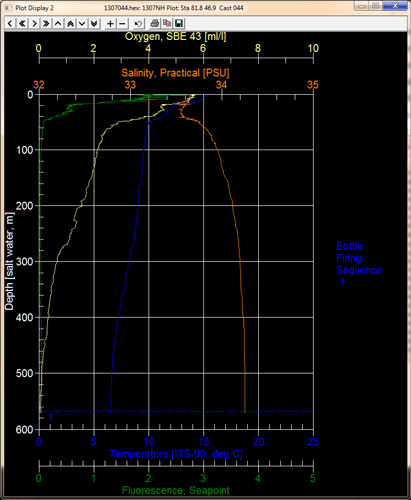Category: Field Work
-

Drifter Buoys
The Institute for Computational Earth System Science (ICESS) utilizes Pacific Gyre GPS/ Mobitex™ “Microstar” drifters to observe and study near-shore ocean circulation off the Southern California coast. The drifters record their position with GPS every 10 minutes and transmit their position data in near real-time to a web-based host computer using the Mobitex narrow band,…
-

SCCOOS Information
Southern California Coastal Ocean Observing System (website) SCCOOS brings together coastal observations in the Southern California Bight to provide information necessary to address issues in climate change, ecosystem preservation and management, coastal water quality, maritime operations, coastal hazards and national security. In 2004, CalCOFI added 9 SCCOOS stations to the standard 66 station pattern. Stations…
-
SCCOOS Data
SCCOOS Station Occupation on CalCOFI cruises from 2004 to present Cruise 80.0 50.5 81.7 43.5 83.3 39.4 85.4 35.8 86.8 32.5 88.5 30.1 90.0 27.7 91.7 26.4 93.4 26.4 202010 X X X X X X X X X 202007 X X X X X X X X X 202005 202001 X X X…
-

SCCOOS Stations
SCCOOS brings together coastal observations in the Southern California Bight to provide information necessary to address issues in climate change, ecosystem preservation and management, coastal water quality, maritime operations, coastal hazards and national security. As a science-based decision support system, SCCOOS works interactively with local, state and federal agencies, resource managers, industry, policy makers, educators,…
-

Net Sampling
Net Sampling Ichthyoplankton sampling is done on all survey cruises and processing of these samples is done at the Southwest Fisheries Science Center (SWFSC) laboratory in La Jolla, California. There, plankton displacement volumes are obtained for each sample and the fish eggs, larvae, and juveniles are separated from the invertebrate zooplankton, and subsequently identified, staged,…
-

CTD Profiling
CalCOFI collects vertical profile data using Sea-bird Scientific software (Seasave V7) and a Seabird 911plusV2 CTD and deck unit. Our SBE 911plus CTD system includes: 9plus Underwater Unit and a 11plus V2 Deck Unit. Current sensor complement includes: • Dual Temperature – SBE 3plus • Dual Conductivity – SBE 4 • Dual Oxygen – SBE 43 •…
-
Station Information
Station Information The majority of CalCOFI field work consists of the occupation of the oceanographic stations -specific geographic locations – which pattern the survey area. Seventy-five stations are scheduled during a typical 18 day cruise. Coverage is expanded north of Pt Conception during winter and spring spawning seasons to 104 stations. Within the allotted ship…
-
Nano-Microplankton Abundance & Biomass
CCE-LTER asseses the microbial community assemblages of the California Current ecosystem (CCE) for abundance and biomass using high-throughput digital epifluorescence microscopy. Samples to estimate the nano- and microplankton (0.2-2.0-µm and 2.0-20-µm size, respectively) are collected, preserved, stained, and filtered onto a membrane filter and mounted on a glass microscope slide in the field. Slides are…
-
Taxon-Specific Phyto-Pigments
CCE-LTER uses a high-performance liquid chromatographic (HPLC) method with a reverse phase C8 column to measure concentrations of chlorophylls and carotenoids in samples of particulate matter from the California Current Ecosystem (CCE). Concentrations of chlorophyll a are used as a proxy for phytoplankton biomass and concentrations of other taxon-specific pigments are used to determine contributions…
-
Size Fractionation
CCE-LTER determines the size distribution of total chlorophyll a by filtering water though filters of differing pore sizes, extracting these in acetone and analyzing fluorometrically. Using size fractionation of chlorophyll a and taxon-specific pigments (chlorophylls and carotenoids) from HPLC analysis, the samples analyzed within the California Current Ecosystem are used to develop a metric for…